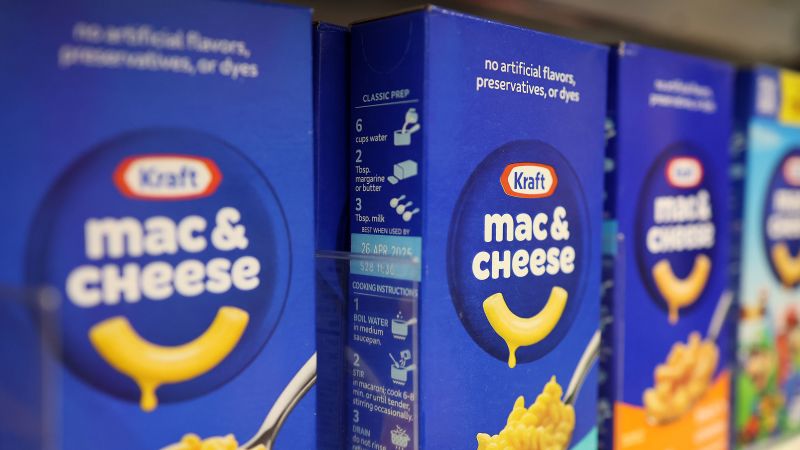Kraft Heinz, a prominent player in the food industry, announced a significant change in its operations that reflects a broader trend towards health-conscious consumer preferences. In a decision that highlights changing attitudes towards food safety, the company revealed that it will eliminate all artificial coloring from its products sold in the United States by the end of 2027. This marks a critical step for Kraft Heinz, the manufacturer behind numerous well-known brands including Kraft Mac & Cheese, Heinz Ketchup, Jell-O, and Capri-Sun, which have faced increasing scrutiny from consumers and governmental bodies, particularly under the watch of Secretary Robert F. Kennedy Jr.’s Department of Health and Human Services.
The announcement was made on a Tuesday, emphasizing Kraft Heinz’s commitment to consumer health. The company has made strides in reducing artificial colors within its product lines; indeed, back in 2016, Kraft Mac & Cheese was reformulated to eliminate synthetic dyes. Pedro Navio, the president of Kraft Heinz North America, stated in a news release that the majority of their offerings already utilize natural or no colors at all, underscoring an ongoing transformation across their portfolio aimed at catering to the market’s evolving preferences.
Kraft Heinz’s pledge to phase out artificial dyes positions it at the forefront of a movement among US packaged food companies. This proactive approach may prompt competitors to accelerate their own initiatives to rid products of synthetic coloring, reflecting a growing disparity between traditional marketing strategies and the emerging demand for transparency in food production.
Currently, the U.S. Food and Drug Administration (FDA) allows multiple petroleum-based synthetic dyes in food products, primarily used to make items more visually appealing, particularly to children. However, these additives have long been criticized due to concerns surrounding their potential adverse health effects, including links to cancer and developmental issues in children. Recently, the FDA banned the use of Red Dye No. 3 in food, beverages, and medication, indicating a substantial shift in regulatory attitudes. Announcements from the FDA, as well as vocal critiques from Kennedy, have labeled these dyes as “poisonous compounds,” pushing for a concerted effort to phase out synthetic dyes over the coming years.
The motivations behind Kraft Heinz’s decision also appear to stem from impending state and federal prohibitions on artificial food coloring. States including California, Virginia, and West Virginia have already instituted bans, while numerous others are exploring similar legislative actions. This regulatory landscape may compel companies to adapt proactively rather than reactively, addressing consumer preferences and potential legislative changes head-on.
Moreover, the pressure is mounting on Kraft Heinz not just from regulatory scrutiny, but directly from Kennedy, who has met with executives from Kraft Heinz and other food companies to advocate for the removal of artificial dyes. Kennedy’s intent to enact significant changes in the food industry underscores the urgency of this issue for manufacturers aiming to stay relevant with contemporary health-conscious consumers.
Notably, Kraft Heinz is grappling with challenges in meeting evolving consumer tastes, particularly as products like Lunchables and Capri-Sun—once staples—are losing appeal amid a growing preference for natural and healthier food options. The company experienced a 6.4% decline in sales last quarter, prompting discussions of strategic alterations and potential acquisitions or divestitures to streamline its operations.
In its efforts to adapt, Kraft Heinz has also announced a change to its board structure, indicating a shift in governance as Berkshire Hathaway, which facilitated the merger of Kraft Foods and Heinz in 2015, withdraws its presence. Analysts view the recent strategies—including divesting brands such as Planters and its U.S. natural cheese division—as indicative of Kraft Heinz preparing for either further consolidation or collaborations within the industry.
As Kraft Heinz embarks on this substantial overhaul, it remains to be seen how these actions will reshape its market position amid an evolving landscape where consumer health takes precedence over flashy packaging. The company’s response to these pressures reflects a larger industry movement towards healthier, more transparent food options, potentially setting a new standard for packaged food companies across the nation.



